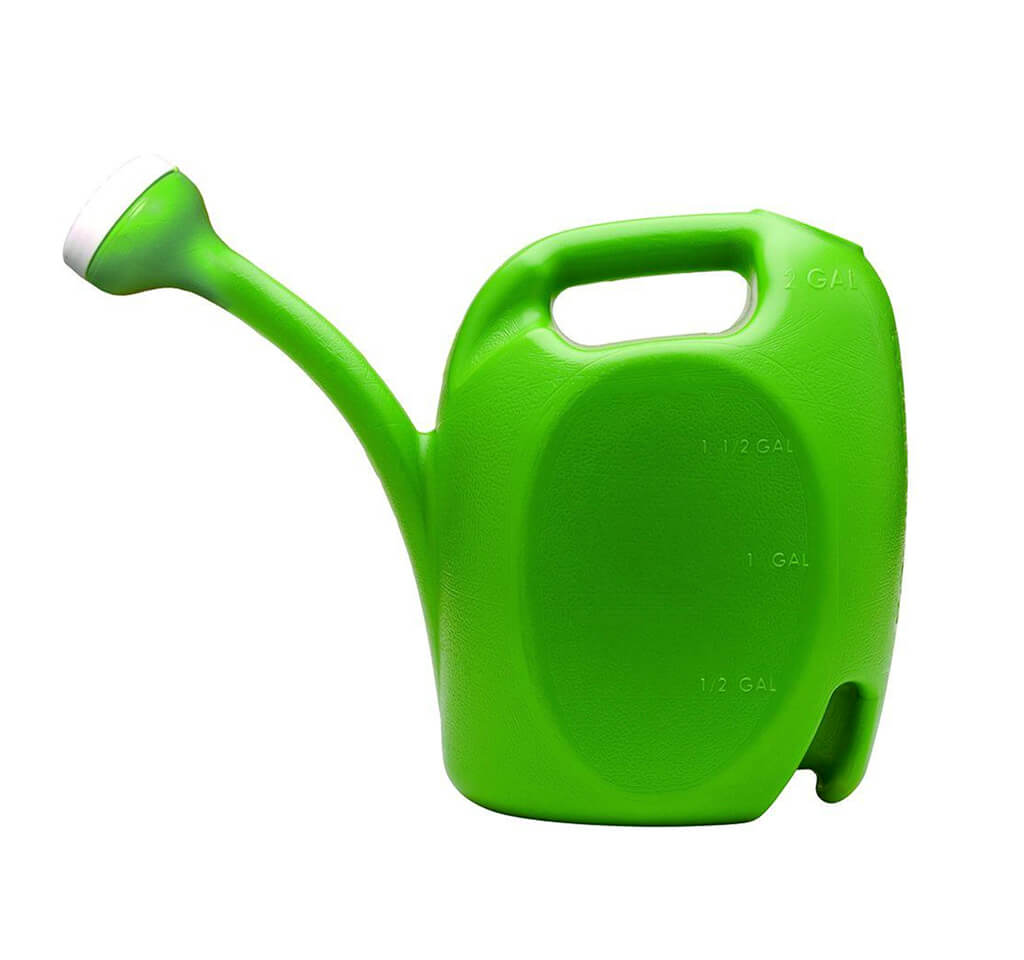Whether you’re nurturing a thriving vegetable garden or meticulously tending to ornamental flowering plants, every gardener needs a reliable watering can. Choosing the right watering can allow careful, efficient irrigation, critical for healthy plants and beautiful blooms all season long.
When selecting your perfect gardening watering can, consider key factors like capacity, spout design, materials, and special features to suit your needs. Partner with the proper watering can and you’ll be well-equipped to nourish your greenery and keep your landscape lush.

Key Considerations for Plant Watering Cans
Size and Capacity
Watering can sizes span anywhere from half a gallon capacity for indoor pots, up to two or more gallons for efficiently nourishing expansive outdoor gardens. Generally, a one to two-gallon vessel offers versatile portability and adequate volume for average gardening needs. Larger volumes minimize refill trips but become heavy to carry when full.
If concentrating mainly on contained planters, a smaller vessel around one quart to one gallon typically works nicely. For sprawling garden beds with abundant vegetation, lean towards higher two to three-gallon capacity models. Scale your watering capacity to your unique gardening scope.
Can Materials: Metal, Plastic or Ceramic
Common watering can materials include:
- Metal: Durable galvanized steel or decorative copper. Watch for potential rust over time if not properly cared for.
- Plastic: Affordable but, more prone to cracking with extended sun/weather exposure. Go for HDPE or reinforced models.
- Ceramic: Attractive terra-cotta, but extra heavy when full and fragile if knocked over.
Reminder: Also consider durability, longevity, appearance, and weight when selecting materials. Reinforced plastic provides a lightweight yet sturdy option for most basic gardening.
Unique Features
Specialized features can enhance efficiency and ergonomics for a more optimized watering can. Consider options like:
- Dual carry handles for easier lifting and maneuvering
- Measurement markers to track water volume
- Wide mouths for fast, easy filling
- Removable filter screens to prevent debris clogging
- Long stems for reaching into deep planters
- Pivoting heads for angled pour control
Best Plant Watering Cans for Specific Gardening Setups
Beyond the core elements above, tailor your ideal choice to your unique gardening context.
Indoor Container Gardens
For houseplants in pots on shelves and windowsills, portable mini watering cans under 16 ounces simplify care. Look for long curved spouts that access inner planter depths while avoiding side drips. Cup-style handles provide control over delicate indoor plants.
Raised Garden Beds
In-ground raised beds allow ample room for plants’ root systems to stretch. Sturdy two to three-gallon cans will efficiently hydrate full-sized vegetable plants and flower beds. Opt for durable metal or plastic models with dual handles and high-precision spouts to easily flood beds. Measure volume markers to eliminate overwatering.
Greenhouses and Solariums
The humid conditions within greenhouses beg for frequent, frugal watering. Thin copper cans nicely match the surroundings with artisan appeal. Spouts with shut-off valves or adjustable flow help finely control moisture levels for finicky exotic specimens.
Hanging Baskets
It’s tricky to thoroughly drench hanging baskets without soaking items below. Custom baskets with built-in reservoirs simplify self-watering. Or go for long-necked cans that allow precisely angling spouts up into suspended planters with no mess. Dual handles aid stability when aiming high.
Watering Can FAQs
Here are the answers to some common garden watering can questions:
-
What size watering can be best for outdoor plants?
For most outdoor gardens, a 1.5 to 2-gallon watering can offer versatility for nourishing both small potted plants up to expansive in-ground beds. The capacity minimizes refills while still allowing easy mobility when full.
-
How often should you water container plants?
Most container plants require watering about once every 1-3 days on average to maintain optimal soil moisture. Monitor soil dryness daily by touching and watching plants for any wilting/drooping to gauge the exact watering frequency needed based on the environment, weather, plant types, and more.
-
What material is best for a watering can – metal or plastic?
Both metal and plastic offer good watering can options. Metal tends to have a classier aesthetic and outlasts plastic, but can show wear and tear over many seasons if not cared for. Reinforced plastic provides an affordable lightweight choice but requires replacing over extended sun/weather exposure to prevent cracking.
Find Your Perfect Plant Care Watering Can
When nourishing your botanicals, don’t just reach for any dusty old coffee tin. Invest in a watering can tailored to your unique gardening needs. With the right vessel, you’ll give your plants perfect hydration for abundant growth and gorgeous greenery that flourishes indoors and out.
Discover custom modern metal cans, trendy color choices, self-watering upgrades, and more to fit your style. Contact the professionals at Aquaguard to explore which high-performance watering cans allow effortless green thumb gardening. Let’s toast to the many seasons of happy, healthy plants ahead!





